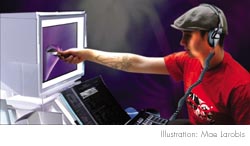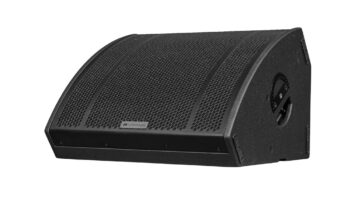
What ho, semi-loyal readers? This month, we’re looking at the pebblein the shoe of online music commerce: micropayments. I’m sure you’veall had the urge to actually purchase a song online. Trouble is, howthe heck do you pay for it when all you want is one measly song?
Actually, paying for stuff online is easy, and a credit card worksfine most of the time. But small-value items require a new way ofpayment when you can’t — or won’t — fork over some coinage,which was so last century. That’s where micropayments comein.
Though the definition is fluid, I think of micropayments as being anephemeral payment method, where no physical cash changes hands andwhere goods or services cost a dollar or less: downloading a song froma second-tier band for $0.85 or paying $0.07 to read an online ‘zinearticle. Okay, fair enough, but how does one take advantage of suchmicropayments? Well, there are two methods: the wallet (a prepaid debitaccount) or the trusted intermediary, a bonded broker.
The wallet approach is simply an escrow account with electronicassess, authentication and low transaction fees. You deposit realdollars into the account, usually via credit card, and a vendorwithdraws funds from that account. Examples are PayPal, Mondex andWorldPay.
The other approach to microtransactions, the trusted intermediary,is also straightforward. Bonded brokers are everywhere in commerce anda few micropayment schemes are basically intermediaries that arebrokering your microtransaction. A good example of this is Peppercoin,founded to commercialize payment protocols. It’s a well-thought-outmethod; although, at the time of writing, Peppercoin’s founders had notyet deployed their system.
I believe that micropayments have floundered for several reasons.First, the point-of-sale infrastructure is spotty. Obviously, there areplenty of financial infrastructure vendors out there that would love tosell you their “solution,” but computing infrastructure isonly half of the problem. One cannot be in front of a personal computerall of the time, and most solutions are PC-based. What about parkingmeters, newspapers, candy and other low-value goods and servicesoutside the home that would benefit from a ubiquitous micropaymentscheme? A possible solution is the smart card, like American Express’Blue product. Amol Deshmukh, field marketing manager forSchlumbergerSema’s Smart Card and Terminals division, told me that,“Smart cards provide convenience and security for the consumer,while offering low-cost transaction authorization along with platformand application versatility for the seller.” Schlumbergerdeveloped the world’s first memory card prototype and issued theworld’s first microprocessor-based smart card way back in 1981, so whenDeshmukh mentions “platform,” he means a completemicropowered computer. Smart card technology is available in a varietyof embedded forms besides the well-known credit card format, includingcell phones, watches and USB fobs.
These days, if you’re a frequent abuser of microgoods, you’re morelikely to use a subscription payment model. Subscriptions are easy andconvenient for buyers. For merchants, subscriptions are highlydesirable because they guarantee a reoccurring revenue stream and allowthem to forecast profit and demand. When a business can plan ahead, itcan control costs. If, however, you can’t see what’s down the road, youtend to either fall into a pothole of unanticipated demand and piss offyour customers because of poor service, or you overbuild and die fromdebt burden. This brings us to the second problem with the currentstate of most micropayments: The profit model is questionable.
Though the majority of micropayment providers have either folded orbeen absorbed by slightly more profitable companies and then gassedinto a comatose state, there are still dozens out there that’ll gladlytake your money in exchange for a, “…scalable, secure,real-time, carrier-grade network solution that enables service andcontent providers to monetize digital content resources and profitablydefine, deliver and bill for content-based services along the completeInternet content distribution value chain.” Say what? Thatlittle pile of verbiage is courtesy of Enition and is typical of thecontinuing mindset in the Web business community, where all customersare magically “partners,” and building massiveorganizations without the promise of reasonable revenues is still takenas a sensible thing (prospect?).
Granted, it can be expensive to gather the resources needed to builda viable Web-based company, but it doesn’t have to be. Just look atGoogle. The real problem is that, when your overhead costs are largerthan your profit, you can’t stay in business and most currenttransaction fees are higher than the profit from any singlemicrotransaction.
Another problem on the profit side is fraud. When the business modelis based on a razor-thin profit, then how much cheating can youtolerate? Leon Schenkler, founder of micropayment company InternetDollar, was asked in an interview with planetgold.com about problemswith fraud. “Sure, we encounter a lot of fraud with credit cards,which caused us to stop accepting credit cards. Out of 100 deals, about93 were fraudulent. We also encounter PayPal fraudulent activities andthe usage of I$ (Internet Dollars, his service) to withdraw funds fromhacked PayPal accounts.” Schenkler goes on to mention that highsurcharges and banking fees eat up profit and banking overhead andcannot be controlled unless there’s sufficient consumer buy-in to scaleup the number of transactions. Schenkler says, “There is thechicken-and-egg paradox. No users of I$, no sites. No sites, nousers,” which brings us to the third problem faced bymicropayments: too many choices.
If, as a consumer, you had well over a dozen different wallets, eachcontaining a small amount of a single, foreign currency that was onlyconvertible at that country’s local bank, you’d grudgingly put them allin a drawer to gather dust. The same goes for e-wallets: In the worldof micropayments, choice can be a bad thing.
Russ Jones, business manager of HP’s defunct MilliCent micropaymenttechnology, agrees with the need for a standard markup language for amicropayment link. In a 1999 Wired interview, he said that,“Without any existing standard, each micropayment supplier hashad to invent a new way to indicate the price of aURL…Standardized pricing markup will do for Internet content whatthe Universal Bar Code standard did for retail merchants.” Thoughit seems like most of the momentum for microtransactions dissipatedduring 1999, the Worldwide Web Consortium (W3C) finished its“Working Draft for the Ecommerce/Micropayment Activity”that year. In the ensuing months, lots of folks have been working onXML syntax and other necessary pieces of the infrastructure puzzle.
Consumers want value for their guilders, retention of establishedfair-use practices and, most importantly, they want convenience. Untilthere are two or, worst case, three competing micropayment systemsworldwide, the concept will languish in obscurity. If payments aresimple, priced right and perceived as secure, maybe there’d be moremoola flowing into artist’s pockets, along with less whining from themedia conglomerates. Or, then again, maybe not.
OMas provides finely wrought, opalescent jars of heady clue muskto savvy vendors and end-users alike. This month’s rant was composedwhile under the influence of Zuco 108’s chill, tropical Tales ofHigh Fever and the classic sounds of Charlie Parker, Bud Powell,Dizzy Gillespie, Charlie Mingus and Max Roach’s Jazz at MasseyHall.







